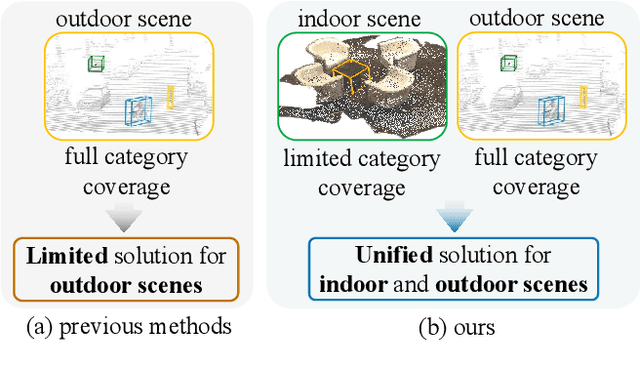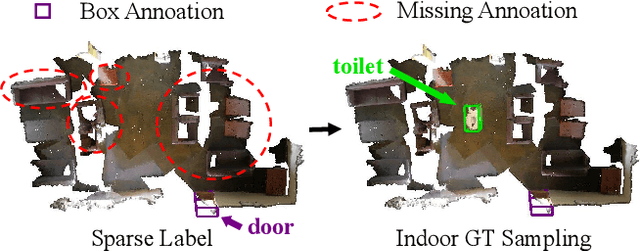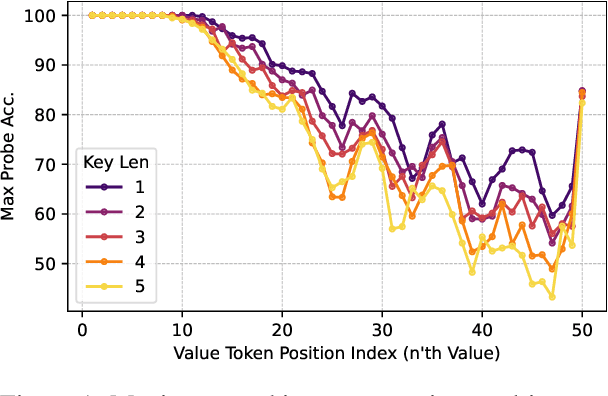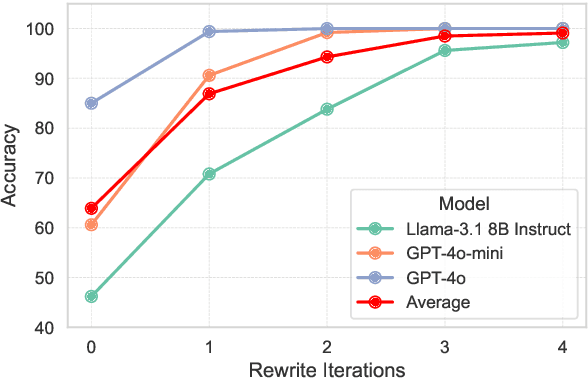Yun Zhu
Sentinel: Attention Probing of Proxy Models for LLM Context Compression with an Understanding Perspective
May 29, 2025Abstract:Retrieval-augmented generation (RAG) enhances large language models (LLMs) with external context, but retrieved passages are often lengthy, noisy, or exceed input limits. Existing compression methods typically require supervised training of dedicated compression models, increasing cost and reducing portability. We propose Sentinel, a lightweight sentence-level compression framework that reframes context filtering as an attention-based understanding task. Rather than training a compression model, Sentinel probes decoder attention from an off-the-shelf 0.5B proxy LLM using a lightweight classifier to identify sentence relevance. Empirically, we find that query-context relevance estimation is consistent across model scales, with 0.5B proxies closely matching the behaviors of larger models. On the LongBench benchmark, Sentinel achieves up to 5$\times$ compression while matching the QA performance of 7B-scale compression systems. Our results suggest that probing native attention signals enables fast, effective, and question-aware context compression. Code available at: https://github.com/yzhangchuck/Sentinel.
System-1.5 Reasoning: Traversal in Language and Latent Spaces with Dynamic Shortcuts
May 25, 2025Abstract:Chain-of-thought (CoT) reasoning enables large language models (LLMs) to move beyond fast System-1 responses and engage in deliberative System-2 reasoning. However, this comes at the cost of significant inefficiency due to verbose intermediate output. Recent latent-space reasoning methods improve efficiency by operating on hidden states without decoding into language, yet they treat all steps uniformly, failing to distinguish critical deductions from auxiliary steps and resulting in suboptimal use of computational resources. In this paper, we propose System-1.5 Reasoning, an adaptive reasoning framework that dynamically allocates computation across reasoning steps through shortcut paths in latent space.Specifically, System-1.5 Reasoning introduces two types of dynamic shortcuts. The model depth shortcut (DS) adaptively reasons along the vertical depth by early exiting non-critical tokens through lightweight adapter branches, while allowing critical tokens to continue through deeper Transformer layers. The step shortcut (SS) reuses hidden states across the decoding steps to skip trivial steps and reason horizontally in latent space. Training System-1.5 Reasoning involves a two-stage self-distillation process: first distilling natural language CoT into latent-space continuous thought, and then distilling full-path System-2 latent reasoning into adaptive shortcut paths (System-1.5 Reasoning).Experiments on reasoning tasks demonstrate the superior performance of our method. For example, on GSM8K, System-1.5 Reasoning achieves reasoning performance comparable to traditional CoT fine-tuning methods while accelerating inference by over 20x and reducing token generation by 92.31% on average.
WeatherGen: A Unified Diverse Weather Generator for LiDAR Point Clouds via Spider Mamba Diffusion
Apr 18, 2025Abstract:3D scene perception demands a large amount of adverse-weather LiDAR data, yet the cost of LiDAR data collection presents a significant scaling-up challenge. To this end, a series of LiDAR simulators have been proposed. Yet, they can only simulate a single adverse weather with a single physical model, and the fidelity of the generated data is quite limited. This paper presents WeatherGen, the first unified diverse-weather LiDAR data diffusion generation framework, significantly improving fidelity. Specifically, we first design a map-based data producer, which can provide a vast amount of high-quality diverse-weather data for training purposes. Then, we utilize the diffusion-denoising paradigm to construct a diffusion model. Among them, we propose a spider mamba generator to restore the disturbed diverse weather data gradually. The spider mamba models the feature interactions by scanning the LiDAR beam circle or central ray, excellently maintaining the physical structure of the LiDAR data. Subsequently, following the generator to transfer real-world knowledge, we design a latent feature aligner. Afterward, we devise a contrastive learning-based controller, which equips weather control signals with compact semantic knowledge through language supervision, guiding the diffusion model to generate more discriminative data. Extensive evaluations demonstrate the high generation quality of WeatherGen. Through WeatherGen, we construct the mini-weather dataset, promoting the performance of the downstream task under adverse weather conditions. Code is available: https://github.com/wuyang98/weathergen
Learning Class Prototypes for Unified Sparse Supervised 3D Object Detection
Mar 27, 2025



Abstract:Both indoor and outdoor scene perceptions are essential for embodied intelligence. However, current sparse supervised 3D object detection methods focus solely on outdoor scenes without considering indoor settings. To this end, we propose a unified sparse supervised 3D object detection method for both indoor and outdoor scenes through learning class prototypes to effectively utilize unlabeled objects. Specifically, we first propose a prototype-based object mining module that converts the unlabeled object mining into a matching problem between class prototypes and unlabeled features. By using optimal transport matching results, we assign prototype labels to high-confidence features, thereby achieving the mining of unlabeled objects. We then present a multi-label cooperative refinement module to effectively recover missed detections through pseudo label quality control and prototype label cooperation. Experiments show that our method achieves state-of-the-art performance under the one object per scene sparse supervised setting across indoor and outdoor datasets. With only one labeled object per scene, our method achieves about 78%, 90%, and 96% performance compared to the fully supervised detector on ScanNet V2, SUN RGB-D, and KITTI, respectively, highlighting the scalability of our method. Code is available at https://github.com/zyrant/CPDet3D.
R$^3$Mem: Bridging Memory Retention and Retrieval via Reversible Compression
Feb 21, 2025Abstract:Memory plays a key role in enhancing LLMs' performance when deployed to real-world applications. Existing solutions face trade-offs: explicit memory designs based on external storage require complex management and incur storage overhead, while implicit memory designs that store information via parameters struggle with reliable retrieval. In this paper, we propose R$^3$Mem, a memory network that optimizes both information Retention and Retrieval through Reversible context compression. Specifically, R$^3$Mem employs virtual memory tokens to compress and encode infinitely long histories, further enhanced by a hierarchical compression strategy that refines information from document- to entity-level for improved assimilation across granularities. For retrieval, R$^3$Mem employs a reversible architecture, reconstructing raw data by invoking the model backward with compressed information. Implemented via parameter-efficient fine-tuning, it can integrate seamlessly with any Transformer-based model. Experiments demonstrate that our memory design achieves state-of-the-art performance in long-context language modeling and retrieval-augmented generation tasks. It also significantly outperforms conventional memory modules in long-horizon interaction tasks like conversational agents, showcasing its potential for next-generation retrieval systems.
Merging Context Clustering with Visual State Space Models for Medical Image Segmentation
Jan 03, 2025



Abstract:Medical image segmentation demands the aggregation of global and local feature representations, posing a challenge for current methodologies in handling both long-range and short-range feature interactions. Recently, vision mamba (ViM) models have emerged as promising solutions for addressing model complexities by excelling in long-range feature iterations with linear complexity. However, existing ViM approaches overlook the importance of preserving short-range local dependencies by directly flattening spatial tokens and are constrained by fixed scanning patterns that limit the capture of dynamic spatial context information. To address these challenges, we introduce a simple yet effective method named context clustering ViM (CCViM), which incorporates a context clustering module within the existing ViM models to segment image tokens into distinct windows for adaptable local clustering. Our method effectively combines long-range and short-range feature interactions, thereby enhancing spatial contextual representations for medical image segmentation tasks. Extensive experimental evaluations on diverse public datasets, i.e., Kumar, CPM17, ISIC17, ISIC18, and Synapse demonstrate the superior performance of our method compared to current state-of-the-art methods. Our code can be found at https://github.com/zymissy/CCViM.
Meta-Reflection: A Feedback-Free Reflection Learning Framework
Dec 18, 2024



Abstract:Despite the remarkable capabilities of large language models (LLMs) in natural language understanding and reasoning, they often display undesirable behaviors, such as generating hallucinations and unfaithful reasoning. A prevalent strategy to mitigate these issues is the use of reflection, which refines responses through an iterative process. However, while promising, reflection heavily relies on high-quality external feedback and requires iterative multi-agent inference processes, thus hindering its practical application. In this paper, we propose Meta-Reflection, a novel feedback-free reflection mechanism that necessitates only a single inference pass without external feedback. Motivated by the human ability to remember and retrieve reflections from past experiences when encountering similar problems, Meta-Reflection integrates reflective insights into a codebook, allowing the historical insights to be stored, retrieved, and used to guide LLMs in problem-solving. To thoroughly investigate and evaluate the practicality of Meta-Reflection in real-world scenarios, we introduce an industrial e-commerce benchmark named E-commerce Customer Intent Detection (ECID). Extensive experiments conducted on both public datasets and the ECID benchmark highlight the effectiveness and efficiency of our proposed approach.
Transferable and Forecastable User Targeting Foundation Model
Dec 17, 2024



Abstract:User targeting, the process of selecting targeted users from a pool of candidates for non-expert marketers, has garnered substantial attention with the advancements in digital marketing. However, existing user targeting methods encounter two significant challenges: (i) Poor cross-domain and cross-scenario transferability and generalization, and (ii) Insufficient forecastability in real-world applications. These limitations hinder their applicability across diverse industrial scenarios. In this work, we propose FIND, an industrial-grade, transferable, and forecastable user targeting foundation model. To enhance cross-domain transferability, our framework integrates heterogeneous multi-scenario user data, aligning them with one-sentence targeting demand inputs through contrastive pre-training. For improved forecastability, the text description of each user is derived based on anticipated future behaviors, while user representations are constructed from historical information. Experimental results demonstrate that our approach significantly outperforms existing baselines in cross-domain, real-world user targeting scenarios, showcasing the superior capabilities of FIND. Moreover, our method has been successfully deployed on the Alipay platform and is widely utilized across various scenarios.
FACT: Examining the Effectiveness of Iterative Context Rewriting for Multi-fact Retrieval
Oct 28, 2024



Abstract:Large Language Models (LLMs) are proficient at retrieving single facts from extended contexts, yet they struggle with tasks requiring the simultaneous retrieval of multiple facts, especially during generation. This paper identifies a novel "lost-in-the-middle" phenomenon, where LLMs progressively lose track of critical information throughout the generation process, resulting in incomplete or inaccurate retrieval. To address this challenge, we introduce Find All Crucial Texts (FACT), an iterative retrieval method that refines context through successive rounds of rewriting. This approach enables models to capture essential facts incrementally, which are often overlooked in single-pass retrieval. Experiments demonstrate that FACT substantially enhances multi-fact retrieval performance across various tasks, though improvements are less notable in general-purpose QA scenarios. Our findings shed light on the limitations of LLMs in multi-fact retrieval and underscore the need for more resilient long-context retrieval strategies.
GraphCLIP: Enhancing Transferability in Graph Foundation Models for Text-Attributed Graphs
Oct 15, 2024



Abstract:Recently, research on Text-Attributed Graphs (TAGs) has gained significant attention due to the prevalence of free-text node features in real-world applications and the advancements in Large Language Models (LLMs) that bolster TAG methodologies. However, current TAG approaches face two primary challenges: (i) Heavy reliance on label information and (ii) Limited cross-domain zero/few-shot transferability. These issues constrain the scaling of both data and model size, owing to high labor costs and scaling laws, complicating the development of graph foundation models with strong transferability. In this work, we propose the GraphCLIP framework to address these challenges by learning graph foundation models with strong cross-domain zero/few-shot transferability through a self-supervised contrastive graph-summary pretraining method. Specifically, we generate and curate large-scale graph-summary pair data with the assistance of LLMs, and introduce a novel graph-summary pretraining method, combined with invariant learning, to enhance graph foundation models with strong cross-domain zero-shot transferability. For few-shot learning, we propose a novel graph prompt tuning technique aligned with our pretraining objective to mitigate catastrophic forgetting and minimize learning costs. Extensive experiments show the superiority of GraphCLIP in both zero-shot and few-shot settings, while evaluations across various downstream tasks confirm the versatility of GraphCLIP. Our code is available at: https://github.com/ZhuYun97/GraphCLIP
 Add to Chrome
Add to Chrome Add to Firefox
Add to Firefox Add to Edge
Add to Edge